Dairy exports are falling significantly in the US with the increasing strength of the dollar and a more competitive international environment.
With the release of November producer prices, the four commodities that establish producer prices fell significantly.
Cheese prices fell 7%, butter prices fell 21.2%, dry whey fell 2.5%, and skim milk powder/nonfat dry milk (SMP/NDM) fell 6.7%.
The dollar has been strengthening against other currencies as shown in the chart below.
A stronger currency makes US exports more expensive on the international markets. The US is now exporting 16% of its dairy production, and changes in export prices and volume have a dramatic influence on domestic prices.
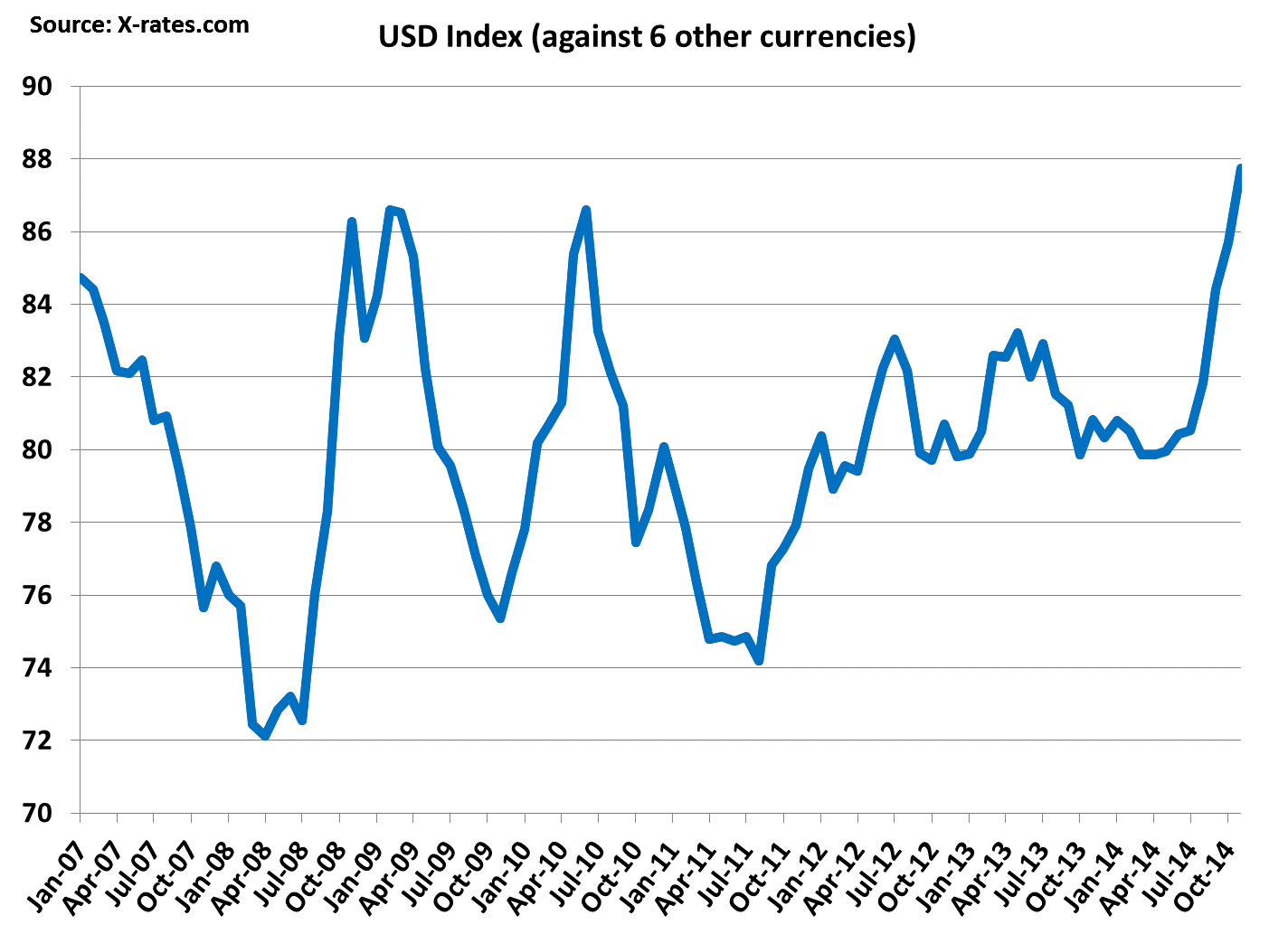
The three largest international exporters of dairy products are New Zealand, the European Union (EU), and the US.
The charts below focus on the dollar exchange rates as compared to the New Zealand dollar and the Euro.
New Zealand is the world’s largest exporter with the EU second and the US third.
The US has been a weak third in terms of export volume, but has been rapidly developing its dairy export business.
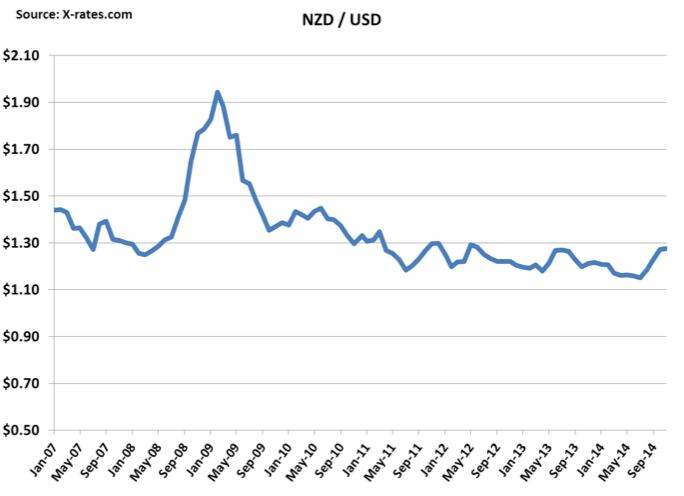
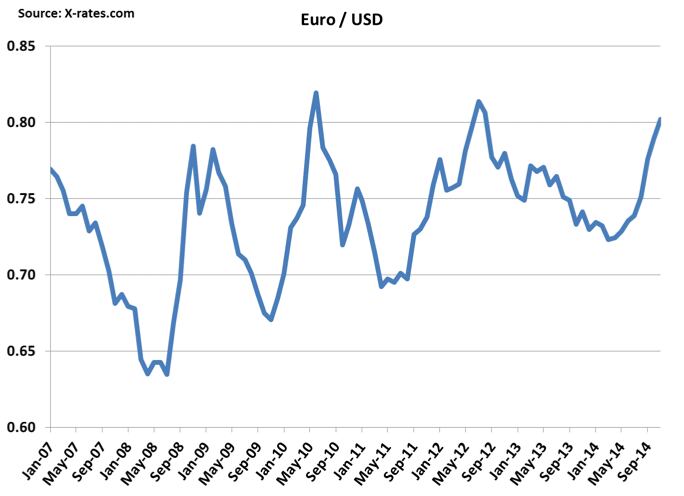
The two most important dairy export items for the US are SMP/NDM and cheese.
The US was the world’s largest exporter of SMP/NDM in 2013, exporting 555,000 tonnes.
Cheese is important, as it is the primary commodity for establishing US dairy producer prices.
Exports of SMP/NDM fell drastically in the last three months, falling below the levels of 2012 and 2013.
There was a slight increase in October volumes, but at reduced prices. This caused a 5% drop in SMP/NDM prices in the US for November, and the CME futures market is projecting an additional 12% price drop in the next three months.
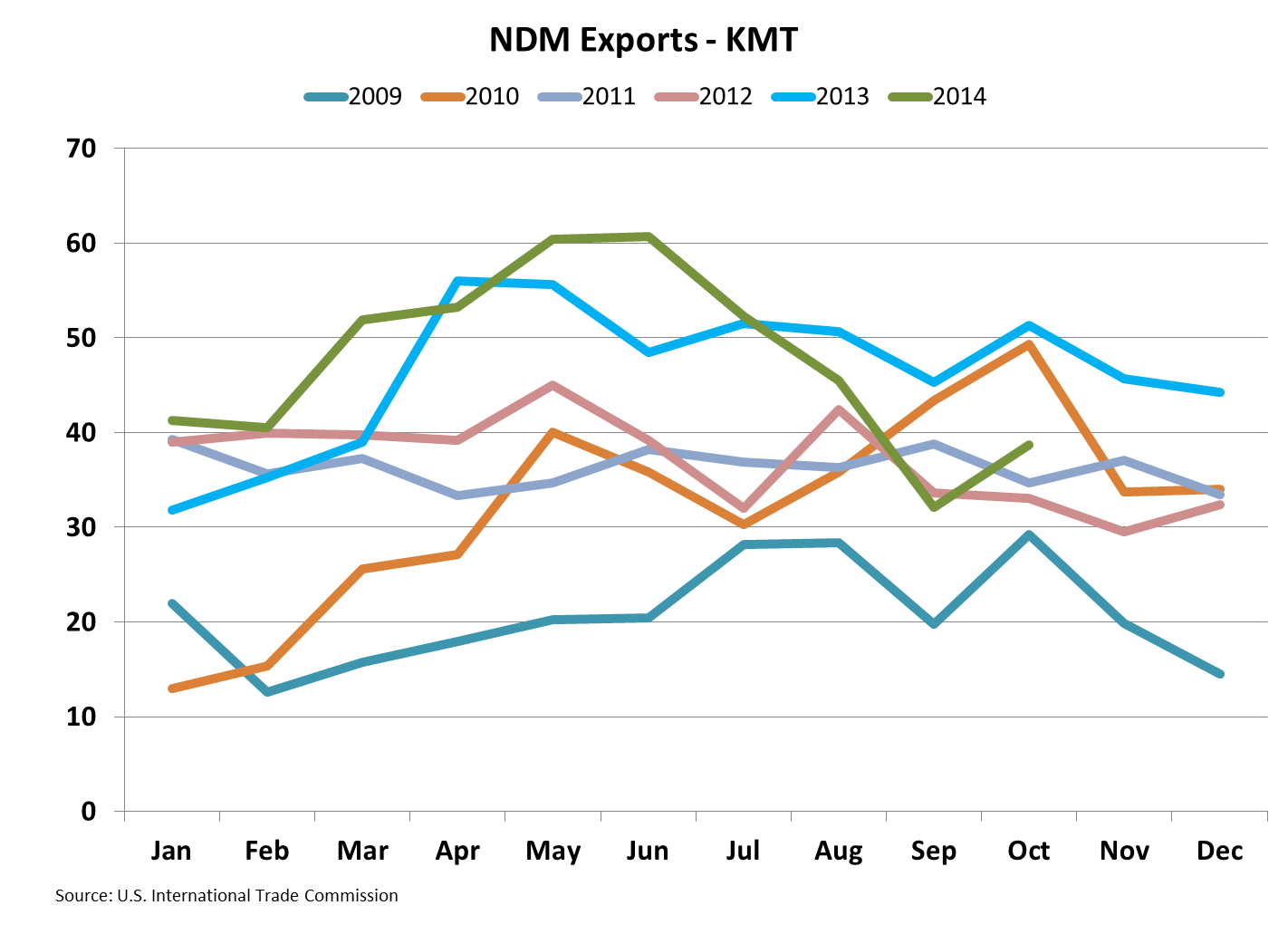
Cheese prices are the primary basis for producer milk prices in the US.
There is a 96% correlation between the Class III milk price and the wholesale price of cheese.
The Class III milk price is the price paid for the majority of producer milk in the US. The wholesale price of cheese is very much determined by supply and demand.
Cheese exports have reached 7.5% of production in 2014, and a drop in those exports will have a quick impact on demand, inventories, and prices.
Cheese exports have been falling since hitting a record high in March 2014.
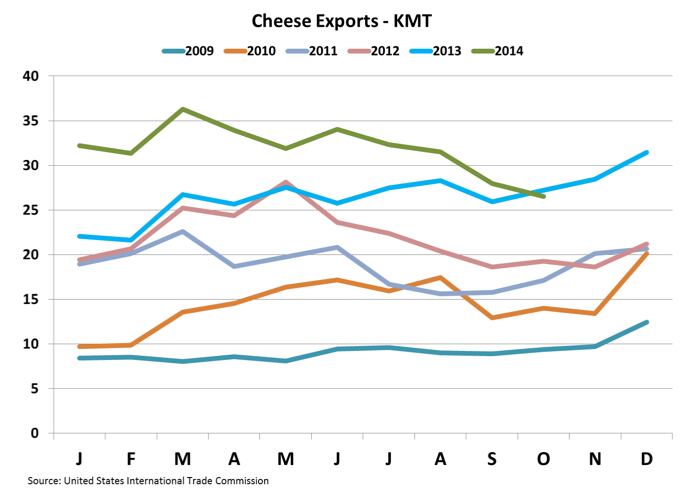
The resulting wholesale price of cheese has already fallen and the Chicago Mercantile Exchange (CME) futures are predicting an additional 26% price drop below the November prices.
Producer Class III milk prices have dropped 9% from their 2014 highs and the CME futures market is predicting an additional 28% drop.

John Geuss (left) is the editor of US dairy commodities blog, MilkPrice.
For a detailed month-by-month analysis of American dairy commodity movements, click here.
